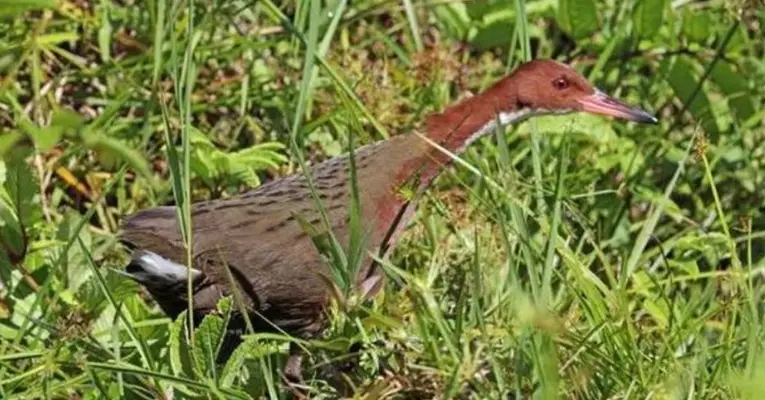Animals
This Bird That Went Extinct 136,000 Years Ago Has Evolved Back Into Existence

In a rare case of a species effectively evolving into existence twice, the Aldabra rail has re-evolved back into existence after first going extinct 136,000 years ago, according to a new study.
Not only that, the flightless bird has also reclaimed its home island in the Aldabra Atoll in the Indian Ocean.
According to the study published May 8th in the peer-reviewed scientific journal Zoological Journal of the Linnean Society, the rail’s home in the atoll has been submerged multiple times throughout history during events that wiped out all the species that inhabited it.
However, the Aldabra rail has continued to return in a rare phenomenon known as iterative evolution, when the same ancestral lineage leads to the repeated evolution of a species at different points in time, producing parallel offshoot species that are nearly identical to one another and can pop up multiple times in various eras and locations—even when past iterations have gone completely extinct.
Such was the case with the Aldabra rail, having descended from a chicken-sized flying bird known as the white-throated rail, which faced its demise around 136,000 years ago when the island was completely inundated and submerged below sea level, wiping out all local fauna and flora.
As sea levels fell over the course of tens of thousands of years, however, fossil evidence has shown that the species once again re-colonized it. This time, the bird lost the ability to fly due to the absence of predators who once populated the island.
In a statement, lead researcher and avian paleontologist Julian Hume at the Natural History Museum said:
“These unique fossils provide irrefutable evidence that a member of the rail family colonized the atoll, most likely from Madagascar, and became flightless independently on each occasion. Fossil evidence presented here is unique for rails, and epitomizes the ability of these birds to successfully colonize isolated islands and evolve flightlessness on multiple occasions.”
This isn’t the first case of iterative evolution, which has also been observed in such animals as ammonites, sea turtles, and sea cows. Yet the two species of rail—the long-extinct iteration and the revived one—are the “most significant” case of avian iterative evolution ever found, the researchers concluded.
David Martill, a co-author of the study and paleobiologist at the University of Portsmouth, said:
“We know of no other example in rails, or of birds in general, that demonstrates this phenomenon so evidently. Only on Aldabra, which has the oldest palaeontological record of any oceanic island within the Indian Ocean region, is fossil evidence available that demonstrates the effects of changing sea levels on extinction and recolonization events.
Conditions were such on Aldabra, the most important being the absence of terrestrial predators and competing mammals, that a rail was able to evolve flightlessness independently on each occasion.”
With sea levels expected to rise in coming years, the modern flightless Aldabra rail may not fare much better than its ancestors. Indeed, with the very real possibility of extinction threatening the existence of over 1 million plant and animal species, odds are that the bird could face its demise yet again. But based on this study, a third iteration of the rail could perhaps return long after a potential deluge subsides.
Typos, corrections and/or news tips? Email us at Contact@TheMindUnleashed.com
